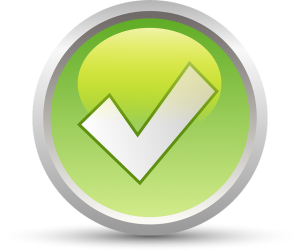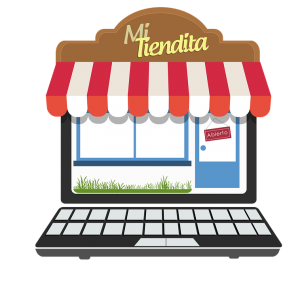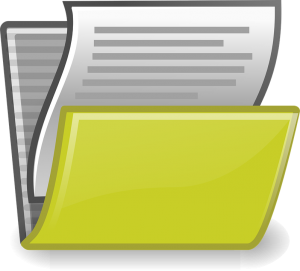How to Verify and Rebuild Data in Quickbooks
 Intuit’s popular and long-running line of business accounting software Quickbooks features a Verify and Rebuild data tool. Verify Data is used to identify common problems in a company file, whereas Rebuild Data is used to resolve data corruption issues found via the Verify Data tool.
Intuit’s popular and long-running line of business accounting software Quickbooks features a Verify and Rebuild data tool. Verify Data is used to identify common problems in a company file, whereas Rebuild Data is used to resolve data corruption issues found via the Verify Data tool.
So, when should you use Verify and Rebuild in Quickbooks? There are many instances in which it’s recommended to use these features. If you experience a fatal error when attempting to open or run Quickbooks Desktop, for instance, it’s a good idea to go ahead and run the Verify and Rebuild Data tools. You should also use it when there are discrepancies on your reports; deposited payments appear in the Payments to Deposit window; not all accounts are displayed on your balance sheet reports; names are missing from lists; you have missing transactions; and routinely as part of regular maintenance and checkup to ensure your Quickbooks company file is “healthy.”
Verifying and rebuilding data in Quickbooks is actually easier than it sounds. Start by selecting Windows > Close All, at which point you should choose File > Utilities > Verify Data. Hopefully, the tool won’t detect any problems, in which case it will say “Quickbooks detected no problems with your data.” If the tool discovers a problem, however, it will present a specific error message, which you should reference when searching for a solution.
To rebuild data in Quickbooks, access File > Utilities > Rebuild Data, at which point you’ll receive a message asking you to back up your company file. Assuming you’ve already created a backup of your company file, click OK to proceed. It’s important to note that the rebuild tool requires a company file backup as a safeguard to prevent lost transactions. When performing the Rebuild Data, you’ll be asked to select a location where you want to save your backup. if the backup fails, click “Cancel” at the Rebuild window. The Rebuild Data tool will commence as soon as the backup is complete.
If the Rebuild Data finds damage to your company file, you’ll need to correct the damage manually. On its website, Intuit recommends locating the error by opening the qbwin.log file and searching for resolution at the Quickbooks Desktop Support site. If you run Quickbooks through a third-party hosting service provider, you can also ask your hosting provider for help.
Did this tutorial work for you? Let us know in the comments section below!
What is an Assembly Item in Quickbooks?
 When using Quickbooks to keep track of your small business accounting, you may come across something called an assembly item. Based on the name alone, it’s difficult to tell what exactly an assembly item is, let alone how it’s used. So, today we’re going to take a closer look at this feature, revealing everything you need to know about assembly items in Quickbooks.
When using Quickbooks to keep track of your small business accounting, you may come across something called an assembly item. Based on the name alone, it’s difficult to tell what exactly an assembly item is, let alone how it’s used. So, today we’re going to take a closer look at this feature, revealing everything you need to know about assembly items in Quickbooks.
An assembly item is essentially a type of line item used when creating a sales form. They combine existing inventory part items and assembly items into a single convenient item.
To create an assembly item, you’ll need to perform two separate steps. First and foremost, you must define the Bill of Materials, which specifies the components used to make the assembly item. Next, you’ll need to build a quantity of assembly items in Quickbooks so the software can deduct the components from your inventory while also adding new quantities of the respective assembled item.
Keep in mind that once you build an assembly item, the respective components will be removed from your inventory as separate parts, simply because they are now part of a new inventory item, which is known as an inventory assembly. After defining your assembly items, Quickbooks will automatically move them to your inventory via building them. Assembly builds are required to keep the inventory quantities correct. If the items weren’t moved, the inventory quantities would be wrong. When an assembly item is built in Quickbooks, the inventory parts and assembly items (known as subassemblies) are deducted from the inventory; thus, the quantity of the assembly item increases.
Some business owners and accountants assume that group items and inventory assembly items are the same. While they both allow you to record a group of items as a single entry, there are some stark differences between the two that shouldn’t go unnoticed. A group item, for instance, cannot be included in another group item or in an inventory assembly item, while an inventory assembly item can be included in other inventory assembly items and group items.
You also don’t have to option to run reports for specific group items. With inventory assembly items, however, you can build reports. These are just a few of the many differences between group items and assembly items.
Did this give you a better understanding of assembly items? Let us know in the comments section below!
How to Change the Time/Date Format in Quickbooks
 Looking to change the time and date format in your Quickbooks accounting software? If you are reading this, I’m assuming the answer is yes. Quickbook allows users to change this format to either a decimal or minutes, depending on the user’s preferences. Unfortunately, this option is somewhat hidden, leaving many users asking the question: how do I change the time and date format in Quickbooks?
Looking to change the time and date format in your Quickbooks accounting software? If you are reading this, I’m assuming the answer is yes. Quickbook allows users to change this format to either a decimal or minutes, depending on the user’s preferences. Unfortunately, this option is somewhat hidden, leaving many users asking the question: how do I change the time and date format in Quickbooks?
First and foremost, it’s important to note that only the administrator can make these changes. If you don’t have admin privileges to your Quickbooks account, you won’t be able to change the time and date format. So, first log into your Quickbooks account as the administrator, after which you can follow the steps listed below to change the time and date format.
Once logged into Quickbooks as the administrator, choose Edit > Preferences > General > Company Preferences tab. From here, you can select either decimal or minutes for your preferred format. With the decimal format, Quickbooks automatically interupts time entries as decimal fractions, so 2 hours and 30 minutes would be represented as 2.5, for instance. The minutes format, on the other hand, is the standard format in which time entries are represented as hours and minutes, such as 2:30 for 2 hours and 30 minutes.
Now that you know how to change the time, you might be wondering how to change the date in Quickbooks. After all, this option isn’t available using the steps mentioned above. So, how do you change the date? Well, the date formats for Quickbooks is the same as your Windows operating system.
If you are running Quickbooks on a computer with either Windows 8 or Windows 10, you should open the computer window by pressing the Windows key + E, followed by Settings > PC Settings > Time and language. From here, click the option titled “Change date and time formats” under the “Date and time” section. You can then configure options for the first day of the week, short date, or long date.
The steps for changing the date format in Quickbooks is a little different if your computer runs Windows 7, however. To update the date format, open the Control Panel > Regional and Language Options > Formats > choose the format regional language that you prefer. Next, change the date formats to the desired way in which you’d like them to be display, followed by clicking the Apply button. Sorry if you were expecting more, but that’s all it takes to update your date format in Quickbooks!
Did this tutorial work for you? Let us know in the comments section below!
How to Delete a Customer in Quickbooks
 Want to delete one or more customers from your Quickbooks account? Launched by Intuit, Quickbooks has become the world’s most popular accounting software for small businesses. It offers both cloud-based and desktop solutions, allowing business owners of all shapes and sizes to keep track of their own accounting records. But if you’re new to the software, you may have some questions, such as how to delete a customer.
Want to delete one or more customers from your Quickbooks account? Launched by Intuit, Quickbooks has become the world’s most popular accounting software for small businesses. It offers both cloud-based and desktop solutions, allowing business owners of all shapes and sizes to keep track of their own accounting records. But if you’re new to the software, you may have some questions, such as how to delete a customer.
Within the Quickbooks interface is a helpful section that keeps track of your customers. Known as the “customer lists,” it allows users to organize and view information associated with either of their customers, such as their customers’ names, addresses, payments, balance due, etc. There are times, however, when a business owner or accountant may wish to remove a customer from this list. If the customer is inactive or no longer available, for instance, there’s no point in keeping him or her on your list.
There are a few ways to handle inactive customers such as this, one of which is to simply hide his or her name. After logging into your Quickbooks account, choose Customer Center > Customer & Jobs > double-click the customer whose name you wish to hide > Customer is Inactive > OK. Assuming you followed these steps, the respective customer’s name should no longer appear in your customer list.
Another solution, however, is to merge two or more customers’ name. Of course, this is only recommended if you have multiple copies of the same customer in your list. Merging them together helps to keep your Quickbooks account nice and tidy, making it easier to scour through data. To merge customer names, click Customer Center > Customers & Jobs > double-click on the customer’s name whom you wish to remove > chance the name to the name in the Edit window > OK > Yes.
A third solution is to simply delete the customer’s name. This is the option that many users prefer, simply because it’s the easiest. To delete a customer’s name, fire up Quickbooks and choose > Customer Center > Customers & Jobs > click the customer’s name whom you wish to remove > Edit > Delete Customer: Job. Congratulations, you’ve just deleted the customer’s name from your account. You can repeat these steps to remove additional names from your account.
Did this tutorial work for you? Let us know in the comments section below!
How to Reduce the Size of Your Quickbooks Company File
 Looking to reduce the size of your Quickbooks company file? Like any other file on your computer, a large size will take up excessive storage space — storage space that could be used for other purposes. But as your business’s accounting needs grow, so will your company file. Thankfully, there’s a simple and effective way to reduce the size of Quickbooks company files. It involves moving the closed transactions into a general ledger; thus, you won’t lose any data but rather it organized your data into the general ledger.
Looking to reduce the size of your Quickbooks company file? Like any other file on your computer, a large size will take up excessive storage space — storage space that could be used for other purposes. But as your business’s accounting needs grow, so will your company file. Thankfully, there’s a simple and effective way to reduce the size of Quickbooks company files. It involves moving the closed transactions into a general ledger; thus, you won’t lose any data but rather it organized your data into the general ledger.
To perform this operation, log into your Quickbooks account and choose File > Utilities > Condense Data > All Transactions > Next > Yes > Condense Data, at which point Quickbooks will begin to condense your data and subsequently reduce the size of your company file.
The process should only take a few minutes, although some larger files may take extra time to complete. In fact, some sources say the Condense Data utility tool could take several hours for large databases, so consider running the process towards the end of your workday. If you expect the process to take a while, simply let it run while you are away. There’s no other action required on your behalf once the Condense Data utility begins.
Keep in mind that you can’t undo the condense data process once it begins. Therefore, it’s a good idea to create a backup of your old company file just in case you wish to revert. Creating backups is a quick and easy process that can save you from heartache, so go ahead and create one before proceeding with the condense data process.
Another option is to simply remove all temporary data from your company file. If you don’t want to use the condense data utility, this is another viable option to consider. Basically, it involves removing all temporary data from your company file. Quickbooks automatically stores a variety of temporary data to the user’s company file. This data isn’t critical, but rather it takes up valuable space while increasing the total size of the user’s company file.
Hopefully, this gives you a better understanding on how to lower the size of your Quickbooks company file.
Did this tutorial work for you? Let us know in the comments section below!
How to Connect Bank and Credit Cards to Quickbooks
 Quickbooks has become the world’s leading accounting software for small businesses. But if you plan on using it, you’ll probably want to connect your bank accounts and credit cards to the software. Once your bank accounts are connected, Quickbooks will automatically download transaction from it, eliminating the need for manual entering these transactions. So, how exactly do you connect your bank accounts and credit cards to Quickbooks?
Quickbooks has become the world’s leading accounting software for small businesses. But if you plan on using it, you’ll probably want to connect your bank accounts and credit cards to the software. Once your bank accounts are connected, Quickbooks will automatically download transaction from it, eliminating the need for manual entering these transactions. So, how exactly do you connect your bank accounts and credit cards to Quickbooks?
To connect a bank account, access the homepage of Quickbooks and choose “Connect an Account” under “Bank accounts.” From here, you can choose your bank and the username and password used to access your account online. Quickbooks will then display all of the accounts you currently have open at this open. You can choose the account you use for your business (not personal), after which you can specify its type. Quuickbooks will automatically download all transactions from the past 90 days, although it won’t display them in your account just yet.
When accessing the “Bank and Credit Cards” page, you’ll see an option for “Category or Match” column sorting. Click either of these to sort the transactions by the respective name. Also, you’ll notice that Quickbooks attempts to find categories for some transactions.
Go ahead and click the first transaction listed to open it. While Quickbooks automatically places transactions in a category that it believes is appropriate, some users may want to change the categories for their transactions — and that’s okay. To change the category of a transaction, open the transaction menu, choose the transaction, select Payee (if the payee is new, click Add), enter a name for the category and click Save.
You’ll also notice that Quickbooks allows users to split transactions if the associated item or items was purchased from different categories in a single transaction. To perform this, simply choose “Split,” after which you’ll see a new Split Transaction window. From here, choose the appropriate categories along with the total dollar amount spent on each category.
Now that you know how to connect a bank account to Quickbooks, you might be wondering how to connect a credit card to Quickbooks. Well, the process is exactly the same. Simply choose “Connect an Account” under the “Bank accounts” menu and follow the steps listed above. You’ll have to enter the type of credit card, along with the username and password used to access your account online. Once Quickbooks connects your credit card, it will automatically important the transactions to your Quickbooks.
Did this tutorial work for you? Let us know in the comments section below!
How to Start or Stop Multi-User Hosting in Quickbooks
 Quickbooks allows hosting in both single-user and mobile-user mode. When starting or stopping multi-user access, however, you must follow some specific steps. First and foremost, you should check to see if your current computer is already in multi-user access mode by visiting File > Utilities, at which point you’ll see the option “Stop hosting multi-user access” if your computer is currently set up for multi-user access.
Quickbooks allows hosting in both single-user and mobile-user mode. When starting or stopping multi-user access, however, you must follow some specific steps. First and foremost, you should check to see if your current computer is already in multi-user access mode by visiting File > Utilities, at which point you’ll see the option “Stop hosting multi-user access” if your computer is currently set up for multi-user access.
So, to start multi-user hosting in Quickbooks, simply click the File drop-down menu, followed by Utilities, then Host multi-user access. It’s a quick and easy process that should only take a few minutes to complete.
To stop multi-user hosting in Quickbooks, click the File drop-down menu, followed by Utilities, then Stop hosting multi-user access.
As the name suggests, multi-user access mode allows Quickbooks to be accessed my multiple users. It’s not uncommon for business owners to allow multiple individuals access to their accounting. If you’re a business owner, for instance, you may want to provide your accountant with access to your Quickbooks, in which case you should set up Quickbooks with multi-user access mode.
Some users have reported an error message when the service user (QBDataServiceUser) fails to create with the correct system rights, however. This error message says “To start or stop hosting multi-user access to company files, you must be logged into Windows as a user who has Administrative privileges. Please log in using an Administrator account and try again.”
This is just one error message associated with Quickbooks multi-user mode. Other error messages may also appear. The good news is that most of these errors are easily fixed using the Quickbooks File Doctor Repair Tool. This tool automatically scans your Quickbooks installation, offering advice on how to fix them. Depending on the specific error, the File Doctor Repair Tool may even fix the error without any extra steps taken on your part.
To fix this error message, you should access Start > Settings > Control Panel > User Accounts > QBDataServiceUser > Properties > Group Membership, at which point you can change the access rights to Power User or Administrator. Click Apply, followed by OK, and restart your Quickbooks program to complete the changes. This should resolve the aforementioned error message.
Hopefully, this gives you a better understanding on how to start, stop and fix problems with multi-user access in Quickbooks.
Did this tutorial work for you? Let us know in the comments section below!
How to Set Up Vendors to Receive Form 1099-MISC in Quickbooks
 Does your business outsource some of its tasks to third-party independent contractors? If so, you’ll need to provide those contractors with a 1099-MISC form for tax purposes. The Internal Revenue Service (IRS) requires this form for independent contractors earning at least $600 during the tax form. Thankfully, there’s a quick and easy way to set up vendors to receive a form 1099-MISC form using the Quickbooks accounting software.
Does your business outsource some of its tasks to third-party independent contractors? If so, you’ll need to provide those contractors with a 1099-MISC form for tax purposes. The Internal Revenue Service (IRS) requires this form for independent contractors earning at least $600 during the tax form. Thankfully, there’s a quick and easy way to set up vendors to receive a form 1099-MISC form using the Quickbooks accounting software.
When you ready to set up 1099-MISC forms for your vendors, log into your Quickbooks account and choose Vendors > Vendor Center. From here, right-click the vendor’s name for whom you wish to set up the 1099-MISC form and click “Edit Vendor.” Next, click the Address Info tab and double-check the vendor’s information to ensure it’s correct.
While accessing the Address Info tab, make sure the Address field contains a two-letter state abbreviation and postal code. If either of these elements are incorrect, you should correct them now. Next, make sure the vendor is listed is a person. As explained by Intuit, the vendor’s legal name should be displayed as his or her first name, middle initial, and last name. If you don’t know the person’s name, leave the Company Name field empty to prevent double names from being displayed on the 1099-MISC form.
When you are finished verifying the Address Info tab, click the Tax Settings tab, after which you’ll be prompted to enter the vendor’s tax identification number in the Vendor Tax IF field. Here, click the option for “Vendor eligible for 1099.” This tells Quickbooks to provide the vendor for a 1099-MISC form. Click “OK” to save the changes. Lastly, repeat these steps for any vendor earning more than $600 in the calendar year.
After setting up vendors to receive a 1099-MISC form, you should reach out to them to ensure they receive it. Of course, most vendors will contact YOU if they don’t receive, but it’s still a good idea to keep the lines of communication open. Because when tax time rolls around next year, you’ll probably be busy working on your own accounting needs. In any case, the steps listed here should allow you to set up the 1099-MISC form for any vendors with whom you do business.
Congratulations, you’ve just set up your vendor or vendors to receive a 1099-MISC tax form!
Did this tutorial work for you? Let us know in the comments section below!
How to Delete a Payment in Quickbooks
 Looking to delete a payment in Quickbooks? If you are reading this, I’m assuming the answer is yes. Quickbooks has become the world’s most popular accounting software for small businesses, and rightfully so — it’s versatile, easy to use, and backed by superior support. But some users may struggle when attempting to delete a payment. If this sounds like a familiar scenario, keep reading for step-by-step instructions on how to delete a payment.
Looking to delete a payment in Quickbooks? If you are reading this, I’m assuming the answer is yes. Quickbooks has become the world’s most popular accounting software for small businesses, and rightfully so — it’s versatile, easy to use, and backed by superior support. But some users may struggle when attempting to delete a payment. If this sounds like a familiar scenario, keep reading for step-by-step instructions on how to delete a payment.
Quickbooks allows users to edit or delete payments they’ve already included in deposits via the Make Deposits window. In order to use this feature, however, you must remove the payment from the deposit.
If you have Quickbooks set up to bypass the Undeposited Funds so it deposits payments directly to one or more of your accounts, you won’t be able to edit or delete a payment without it affecting your records and throwing off your books. When you delete a payment, the payment no longer exists; thus, it can throw off your books. So to fix this problem, select the line containing the payment you wish to delete and access the Edit menu > Delete Line.
Quickbooks will now delete the payment from this deposit. The good news is that the payment still exists in your records. Rather than it being deposited, however, the payment will be deposited. Quickbooks then places the money back into you Undeposited Funds. You can remove the payment entirely by deleting it from your Undeposited Funds.
When you are finished, save the deposit by clicking “Save” in the Make Deposits window. This records the deposit without the payment you’ve deleted. Hopefully, this gives you a better understanding of how to delete payments in Quickbooks. Just remember that using the aforementioned tutorial moves the payment from deposited to undeposited. This is helpful because it doesn’t throw off your books, rather it keeps it on record for tax and other accounting purposes.
o edit or delete a payment you’ve already included in a deposit in the Make Deposits window, you must remove the payment from the deposit.
If you have set up QuickBooks to bypass Undeposited Funds and to deposit payments directly into an account, you can’t edit or delete a payment without affecting your records. When you delete a payment from the account register, the payment no longer exists in QuickBooks.
Did this tutorial work for you? Let us know in the comments section below!
